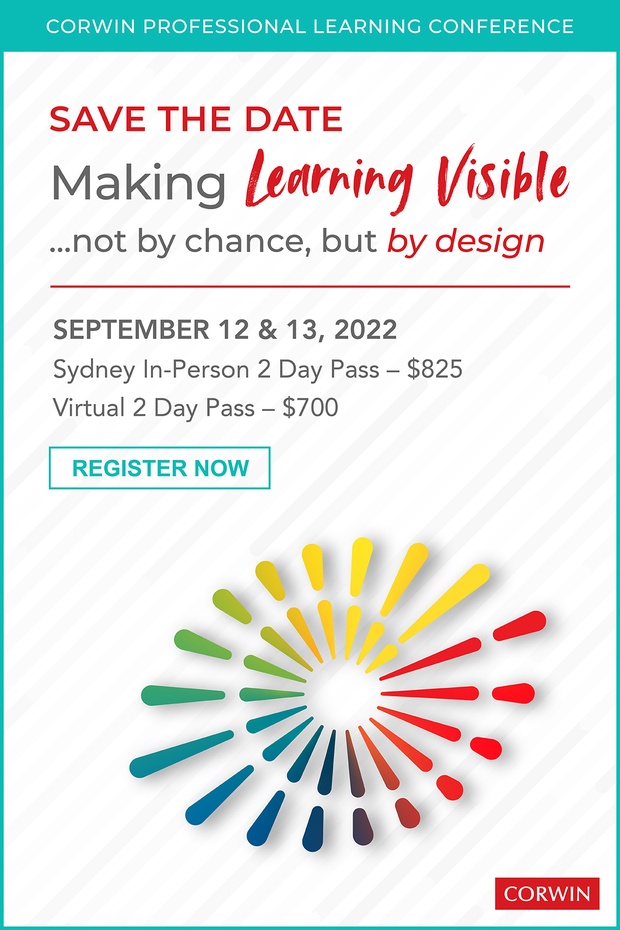While learning is a process and takes time, to answer the previous question, teaching and learning must be visible each and every day. That’s right – to know whether our decisions result in student learning and our learners make growth, teaching and learning must be visible for all to see.
So exactly what is meant by visible teaching and learning. John Hattie captured the definition of visible learning through his massive collection of meta-analyses, or studies of studies, that make up the Visible Learning Research (www.visiblelearningmetax). He points out that visible learning is when teachers see learning through the eyes of their students and students see themselves as their own learners (Hattie, 2012).
What is likely less familiar to us is the concept of visible teaching. After all, anyone could stop by our classrooms, look in on us and our learners, and see what is going on in the classroom. Well, there is a bit more to visible teaching and that is the focus of this blog.
Visible teaching is the deliberate, intentional, and purposeful moves that reflect how we see our role as the teacher: to generate and interpret evidence of the impact we are having on our learners. We can unpack this a bit more by emphasizing three key ideas associated with visible teaching.
First, visible teaching requires that we establish and share clarity around learning. Clarity around the learning involves establishing the learning expectations based on our grade-level and content-area standards and sharing that clarity with our learners through learning intentions and success criteria. From the very beginning of the learning experience, the goals and outcomes for the learning experience are visible to both us and our learners. Thus, visible teaching. Keep in mind, simply telling the learners or writing the learning intentions and success criteria does not make our teaching visible. Instead, we want to share clarity so that each of our learners can answer three very important questions:
- What am I learning?
- Why am I learning it?
- How will I know when I am successful?
When our learners can answer these three questions, the actions or moves we make are not arbitrary events that occur during the learning experience. Instead, our learners see our moves as deliberate, intentional, and purposeful actions that support their progress towards the learning expectations (i.e., learning intentions and success criteria). However, this is only part of what it means to engage in visible teaching.
Second, visible teaching requires a rigorous task. The task we select or design, and then implement in our classrooms must offer the right level of challenge to learners. Tasks must not be too hard or too easy. They must be just right. Tasks must not be too interesting or too boring. They must be just right. Finding this ideal level of challenge makes our expectations of learners visible to them and reflects our expectations of them as learners. For example, a task that is too easy sends a visible message that we “do not think they can do it.” A task that is too difficult sends a visible message that we are unrealistic in our expectations.
The task we select or design, and then implement must also align with the expectations established and shared through the learning intentions and success criteria. Consider the learning intention that, Today we are learning about inferences. One of the success criteria might be, I can make an inference and cite evidence from the text that I am reading. The verbs in this success criteria are make and cite. Therefore, the task must offer learners multiple opportunities to practice and develop proficiency at making and citing. A task that simply has learners identify is not aligned with the expectations and thus is not rigorous.
Finally, visible teaching requires the generating and interpreting of evidence. To unpack this final aspect of visible teaching, let’s consider two strategies that are common in our schools and classrooms: multiple- choice questions. While asking learners to respond to a multiple-choice question, what evidence of learning is generated by such a task? What about summarising? Visible teaching requires that learning and thinking be made visible through the strategies we use in the learning experiences. Those strategies must take what is going on inside the minds of learners and bring it out for us and them to see. When the learning and thinking is visible, we know what the learner knows, understands, and can do. We can use this information to decide where to go next. When we make their learning and thinking visible, our next move becomes visible as well. That is visible teaching.
Let’s return to the question about multiple-choice questions and summarising. By now you likely see that summarising generates the evidence for interpretation. This interpretation comes from both us and our learners. Multiple-choice questions, tell us which answer learners selected; summarising tells us what they know, understand and are able to do.
Conclusion
The three aspects of visible teaching reflect deliberate, intentional, and purposeful moves that reflect how we see our role as the teacher: to generate and interpret evidence of the impact we are having on our learners. Through clarity, rigorous tasks, and the continuous generation of evidence, we both evaluate our impact on student learning and, with confidence, know where to go next in our teaching.
To hear more about Making Teaching Visible please join me at the Corwin Professional Learning Conference – 12 & 13 September – in person or virtually.
Follow here for more information.
Click here to learn more about Dr John Almarode's work in education.















